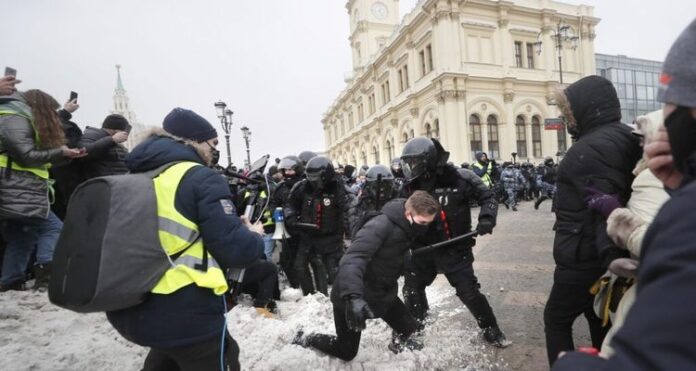| Translate This News In |
|---|
Far from believing that the Ukraine conflict is lessening, the US is ramping up its information warfare effort against Russia, putting the globe on high alert for a military invasion of Ukraine.
The Biden administration, eager to maintain pressure on Russian President Vladimir Putin while keeping its friends together, is unequivocally denouncing what it perceives as Moscow’s falsehoods and warning that the threat is only growing. Despite the Kremlin’s assurances that some personnel had returned to base, a senior official warned late Wednesday that Russia had massed additional 7,000 troops near the Ukrainian border in recent days.
“Every indication we have now is that they intend only to publicly offer to talk and make claims about de-escalation while privately mobilizing for war,” the official said, reiterating that Russia could stage an incident as a pretext to attack with around 150,000 troops, as President Joe Biden said Tuesday.
The fresh US assertions were the latest effort in a very unique public relations campaign based on declassified intelligence aimed at removing Putin’s element of surprise and depriving Moscow of the customary edge it obtains via its mastery of misleading techniques.
Few people in Washington believe the government’s statements that Putin is ready to invade at any time. However, the intensity of US warnings over a period of weeks may soon raise the question of how long Biden can maintain the state of alert, and whether the continued absence of an invasion despite ever-increasingly alarming warnings may open gaps between NATO allies – and between the US and Ukrainian governments. Such tensions would have a direct impact on Putin’s long-term geopolitical objectives.
Both the United States and Russia, the world’s two most powerful nuclear powers, have stated their willingness to dialogue. However, they continue to disagree with Putin’s proposals to dismantle current security arrangements in Eastern Europe by withdrawing NATO troops from former Warsaw Pact countries.
The US strategy is risky because it might drive Putin over the edge, especially if, as some US officials think, he’s becoming prone to a bunker mentality and receiving little outside advice and perspective from individuals ready to dispute his ideas.


















